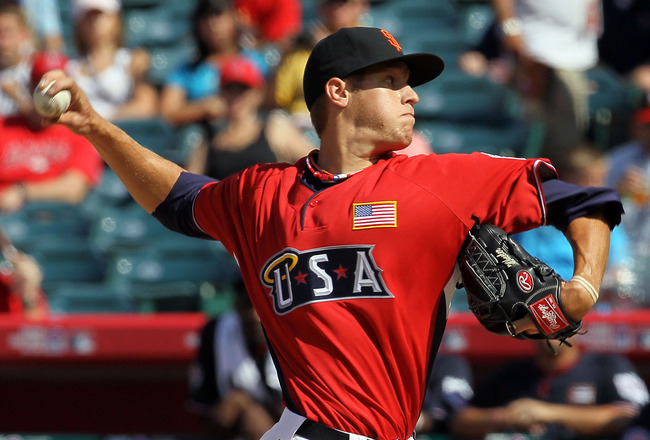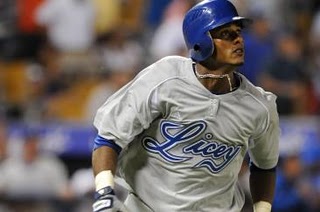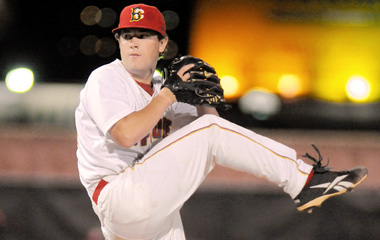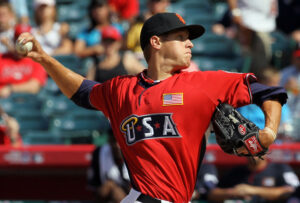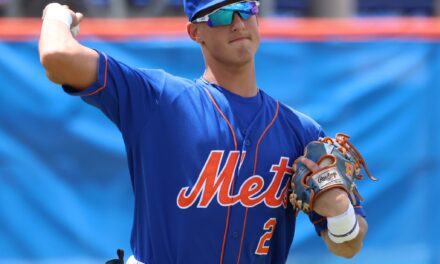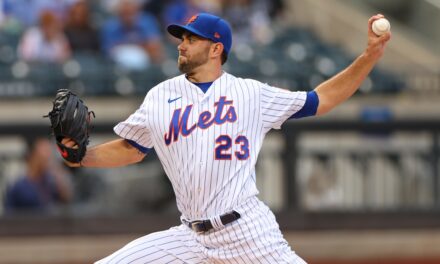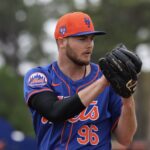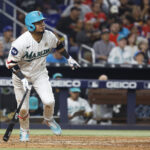Here is the second and final part of the Q & A I conducted with Wally Fish and Nathaniel Stoltz, two of the guys behind the great baseball site Seedlings To Stars.
Who is most likely the shortstop of the future for the Mets Jordany Valdespin or Danny Muno?
Nathaniel: I have to take Valdespin just on sheer proximity here. I love Muno’s skillset, but he hasn’t even proven himself in full-season ball yet, and as a college player, even one poor season will send him falling off the prospect radar.
Neither player, however, is a great fit defensively at short, and both profile more as second basemen in the majors. I wouldn’t be shocked if Muno ends up as the better player, and neither is a can’t miss prospect by any means, but given that Muno he’s three levels behind and just one year younger, he has a lot of progress to make before he looks more likely to seize a starting job than Valdespin. Ultimately, the nice thing is that the Mets have two options there, and with Reese Havens as well, there’s a nice trio of middle infielders. It’s tough to say who will make it and who won’t, but chances are someone will.
One of the guys that really stood out for me last season was Jack Leathersich. What can you tell me about him and how quickly do you think he will move up, when can we see him coming out of the Mets’ bullpen gates?
Nathaniel: Leathersich sure put up eye-popping numbers, didn’t he? Like Muno, he’s a college product who hasn’t even pitched in Low-A yet, so let’s not go nuts, but he’s got low-90’s heat and two solid offspeed pitches. He’s not the next Billy Wagner, but he could be an Alan Embree sort of guy.
I could see him speeding through the minors quickly—I wouldn’t be shocked to see him this September after a sort of Addison Reed season. More likely, he ends the year in Double-A (provided everything goes well) and comes up in mid-2013. However, Leathersich did start in college, and the Mets may want to try him out there; obviously, a move to the rotation would slow his timetable considerably.
Recently, ESPN’s Keith Law ranked the Mets 22nd among all 30 MLB teams. Is it really that bad still? I was of the opinion that the Mets made up a lot of ground in the last two seasons and had them ranked about 14th. Act as sort of a tie breaker and share your thoughts.
Wally: When it comes to ranking farm systems there are so many variables that I try not to get too hung up on the actual numbers. You can take 1 player in an organization, ask 20 different “experts” what they think of him and you’re likely to get at least 10-12 (if not 20) different answers. Now factor that out over a couple hundred players in each system getting compared to the couple hundred in each of the other systems and it really becomes an exercise filled with variables and little else.
You have to consider how far down into each system the source is going. Are they basing their rankings on the Top-10 prospects of a system, Top-20, Top-50 or some other number? How well versed is the source in all of the organizations? What emphasis do they place on a player’s ceiling versus floor? How about depth versus impact talent? How do they weigh tools versus production? How do they factor in the things that can’t really be measured such as work ethic, desire and “feel” for the game? The answers to those questions, and many others play a huge role in comparing farm systems and ultimately in ranking them 1-30. I’m personally not one to get too hung up on the ranking attached to a player or an organization because often times the variables and answers to the above are not readily available or apparent. That’s why I like to look at what each source has to say beyond the ranking itself but rankings are fun to check out and can be valuable if you have some context.
All in all, I usually look at systems in terms of thirds. So you have your top 10, your middle 10, and your bottom 10 organizations. Beyond that the top 3-5 and bottom 3-5 are usually fairly easy to identify and the rest are jumbled up in between and can be all over the map.
With respect to the Mets, I think it’s pretty safe to rank them somewhere in the middle 10. I recently compared our Top-100 list with the list of five other sources and put together a rankings system in my conclusion/summation article using the data from those lists to apply a completely objective ranking with an easily recognizable and defined methodology. I plan to do another round of this comparative series in a couple of weeks with another set of Top-100 lists and look forward to the results of that study to see how much the “needle” moves in the overall rankings of each team.
After the first round, the Mets were 18th so my results basically split the difference between where you had them ranked and where ESPN had them slotted. I think any ranking in that mid-teens to low-twenties range is justifiable and puts them basically in the middling mass of organizations.
Lucas Duda never really spent any quality time on anyone’s prospect list, and yet here he is about to lay claim to the Mets everyday rightfield job in 2012. Did he just slip through the cracks?
Nathaniel: You’re asking the wrong guy! I actually had Duda 49th on my top 100 prospects entering 2011, and he obviously didn’t let me down, delivering with the bat in his rookie campaign.
As for why others didn’t like him, it goes back to what I was saying earlier about first base prospects. Here’s a paragraph out of the article I mentioned in my response to #3:
“Obviously, this sort of analysis has tremendous bearing on my ranking of first base prospects. The way I look at it, they’re all fighting for 5-8 spots. I figure there’s going to usually be 8-10 true first base “prospects,” and half of them will work out, and then all the other minor league first basemen combined will produce two or three unpredictable sleepers who go on to a major league career. Two or three of the true “prospects” and one of the sleepers then go on to actually become above-average at the position.”
Prior to 2010, Lucas Duda was far, far away from being in the 8-10 “true first base prospects.” In three seasons, he’d never had a year where he hit even a dozen home runs, and as basically a “bat-only” guy who wasn’t particularly young for his levels, he was far from exceptional—he was really in the same position Dykstra and Welch are in, as a nice minor league bat that doesn’t project as much of anything.
Suddenly in 2010, he finally hit with the sort of authority you’d expect from someone his size. As soon as he carried his performance over to Triple-A, I was squarely on his bandwagon, especially since he was also in the outfield full-time—once the package came together for him, few minor leaguers had such a well-rounded offensive profile, and fewer still had carried that sort of performance through up to Triple-A.
Sometimes, though, there’s a real lag effect with breakouts, where people want to see a player sustain the breakout for a second year. This is particularly true for guys like Duda, whose prospect case was always built more on production than any sort of “tools” or projection. Given, though, that his breakout propelled him to the major leagues, so he had nothing left to prove as a prospect, I think people should have bought into it more quickly.
I want to thank both Wally an Nathaniel for taking the time to answer a few questions for us, and I would urge you to make Seedlings To Stars one of your frequent stops for the latest prospects news.
In case you missed it, here is Seedlings To Stars Interview – Part One

